Farming on the High Plains has always been an adventure. Limited rainfall has made raising grain crops risky, with some years being productive and other years complete failures. Strategies developed for dealing with the infrequent rain were deep, frequent tillage, and fallowing. Deep tillage was supposed to loosen the soil as deep as possible for “better” water infiltration and storage. Fallowing was intended to manage water by preventing plant growth for long periods to raise a better grain crop the following year.
In hindsight, these practices were colossal mistakes. Tillage oxidized soil organic matter, which decreased soil water-holding capacity and led to collapsed soil aggregates and pore space, significantly reducing water infiltration. Fallow was also counterproductive as we failed to realize that preventing plant growth robbed the soil of vital root exudates responsible for producing soil organic matter. Thus, fallow didn’t “rest” the soil, it starved it. Together, tillage and fallow have depleted our soils on the High Plains and made them a shell of what they once were.
The recent move to no-till in the area over the last couple decades has helped moisture availability, but fallow is still an integral part of the system and is an impediment to improving the soil. The problems inherent in this system are erratic yields, high weed control costs during fallow due to herbicide resistant weeds, the need for chemical fertilizer to sustain yields, and high harvest cost per bushel due to low yields. All of these factors combine to make grain cropping on the High Plains a very marginal enterprise economically.
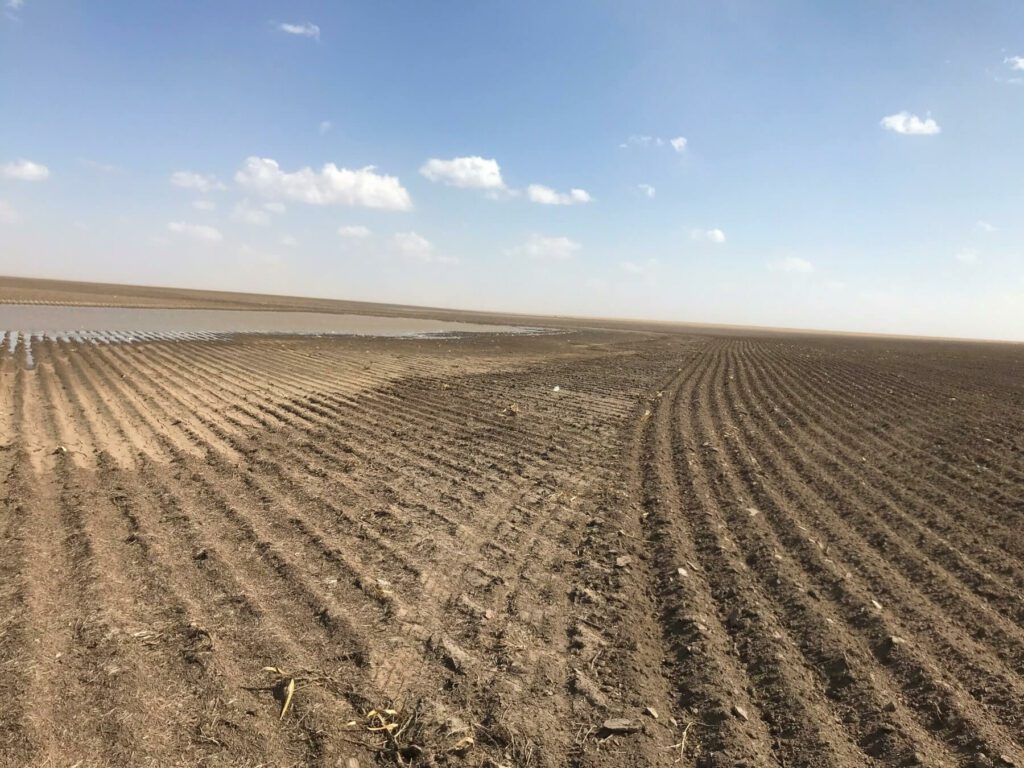
Here is proof of a broken water cycle, with standing runoff water from a recent rain surrounded by soil that is powder-dry and blowing. Poor infiltration caused by tillage is the root cause of both the wet hole and the dry upland soil.
Why did we go down this route? It was because we thought we had to grow water-intensive grain crops- which makes no sense in arid areas! The native vegetation was mostly perennial grasses and deep-rooted forbs that produced very little seed (because seed production requires more moisture) and was harvested by ruminant animals like bison and antelope. Since the most successful agriculture systems are developed by mimicking nature, perhaps we should strive to emulate the native prairie when designing our agriculture systems.
One producer who is mimicking nature is John Niswonger of Wallace, Kansas. John has transitioned much of his farm from the typical wheat-fallow-sorghum-fallow system to a sequence of continuous cropped mixtures of grazed cover crops. BMR sorghum-sudan (summer grazing) and forage sorghum (winter stockpile) are mainstays of John’s mixtures due to their high production and efficient use of water. Winter annual forages like wheat are also incorporated into the system to provide high quality green feed in late fall and early spring. The native grass pastures of the area are incorporated into the grazing system, using an adaptive multi-paddock grazing system, so that pastures are grazed intensely once during the early part of the growing season and then allowed to recover until after frost, when they can be grazed in the dormant season. This late season rest has allowed his pastures to develop from primarily buffalo grass into stands of big bluestem and other tall grasses.
Wheat in the system can be grazed in dry years, or in wet years it can be allowed to produce a grain crop. Legumes are included in the mix to provide nitrogen, and since grazing returns most of the mineral nutrients back to the soil, fertilizer requirements are very low. Weed control costs in this system are also low, because the most troublesome weeds like kochia and Palmer amaranth are actually very good forages and are readily eaten, which turns them into an asset rather than an expensive menace. Most importantly, moisture is converted very efficiently into money. John reports that the economics of his operation have improved dramatically since this transition. He is raising a cow-calf pair on four acres of cropland and two acres of native pasture, and feeding very little hay. Almost the entire needs of the cowherd are met by grazing alone.
A sample grazing sequence in a system like this might include the following:
- Winter: graze on a stockpiled mix of primarily non-heading forage sorghum, with sunflowers, guar, and collards added for protein.
- Spring: winter annual mix based on rye, triticale, or graze-out wheat.
- Early summer: native grass.
- Late summer: sorghum-sudangrass, pearl millet, cowpeas, sunn hemp, mung beans, buckwheat, and okra.
- Fall: dormant native grass with protein supplement.
- Late fall: winter annual mix if it develops enough for fall grazing.
Niswonger is not alone in his approach to farming the arid High Plains. Jacob Miller of Culbertson, Nebraska, graduated from university and returned to the family farm in 2013 with big plans. Miller remembers, “I was going to be a farmer so I went and bought a combine and grew wheat, and I grew milo, and I grew soybeans. And I didn’t make a damn dime farming.” It only took two years to discover what his father already knew- that grain farming wasn’t going to work, especially amid the current economy. Like Niswonger, he decided to convert his cash grain production acres to cover crops for grazing.
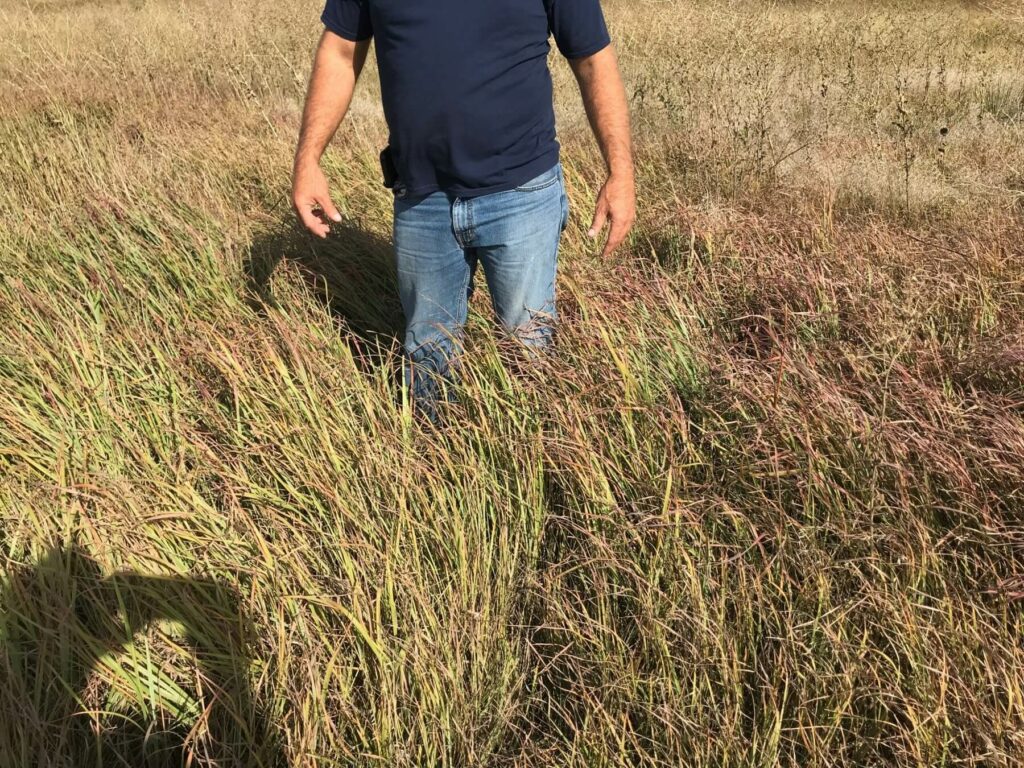
Niswonger’s pasture that was mob grazed in June but has now rested 75 days while his cows were grazing cover crops. The big bluestem regrowth on this is very impressive for western Kansas, and this can provide winter stockpile grazing or be set up for tremendous production next year.
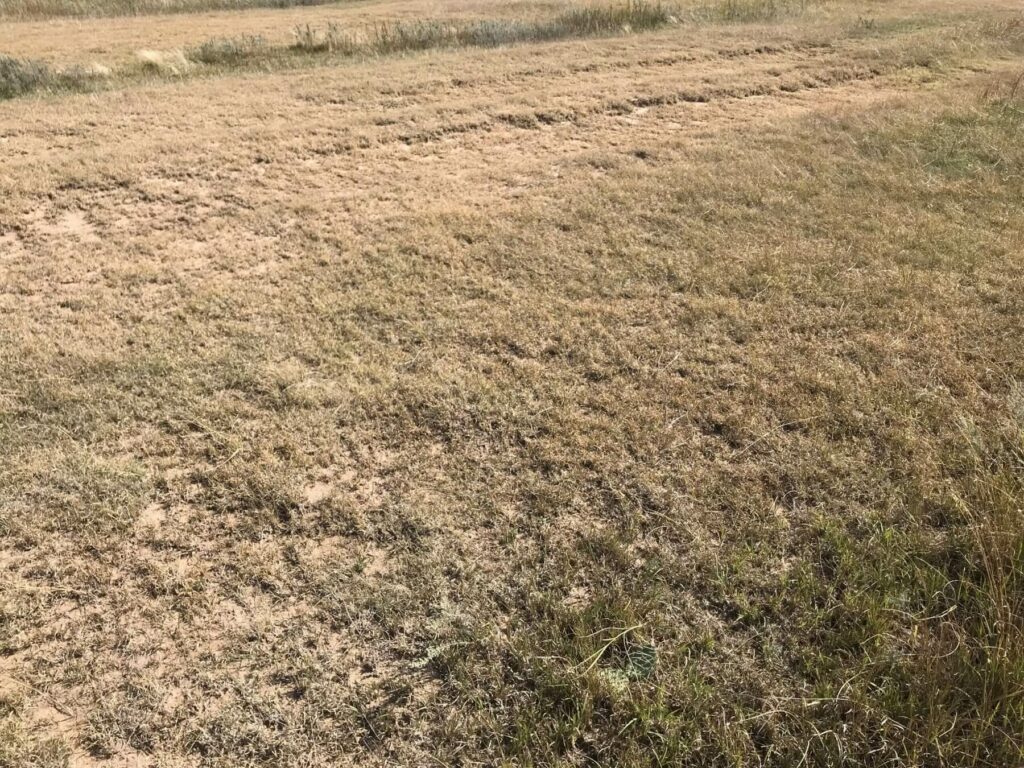
This buffalograss pasture neighboring Niswonger’s pasture in the previous picture is continuously grazed throughout the summer. No cover, poor water infiltration, poor yield, and extremely low stocking rates.
The goal is grazing every acre they have and grazing 365 days a year. Miller has largely kicked the hay habit by keeping something growing all the time. A variety of cover cropping strategies are used, including spring-planted mixes of peas, oats, barley, and rapeseed which cattle graze in early summer, and summer planted sorghum-based mixes grazed through the fall and winter. Like Niswonger, fall planted mixes of rye and hairy vetch are grazed from March to the beginning of June. The aggressive and tough nature of rye makes it a favorite choice as it typically gives the most production and best soil building properties even under the toughest of conditions. Native range is rotationally grazed between cover crops.
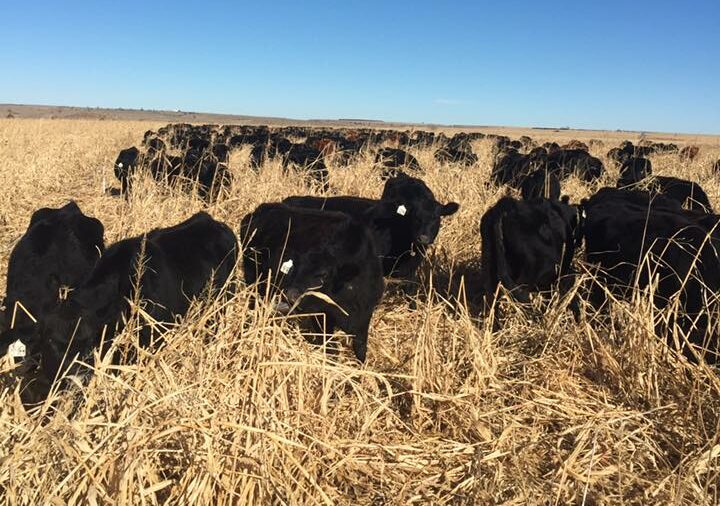 The economics of this system works. On yearling calves, the cost of gain is $0.45-$0.65 per pound (depending on what is being grazed) with a typical summer average of 2.3 ADG and an average 400 pounds of beef per acre. Miller calves in sync with nature, starting in May and keeps costs in line and improves his genetics by raising his own replacement heifers and bulls. Ever the entrepreneur, Miller has also started a fencing supply company (www.livewirefencesupply.com/) and sells a full line of quality products as well as customized solar-powered energizer solutions.
The economics of this system works. On yearling calves, the cost of gain is $0.45-$0.65 per pound (depending on what is being grazed) with a typical summer average of 2.3 ADG and an average 400 pounds of beef per acre. Miller calves in sync with nature, starting in May and keeps costs in line and improves his genetics by raising his own replacement heifers and bulls. Ever the entrepreneur, Miller has also started a fencing supply company (www.livewirefencesupply.com/) and sells a full line of quality products as well as customized solar-powered energizer solutions.
In addition to the economics, soil health has improved with noticeable increases in soil organic matter, infiltration rates, and biological activity. This “farming in nature’s image” method has also led to increased populations of mycorrhizal fungi, earthworms, wildlife, and birds.
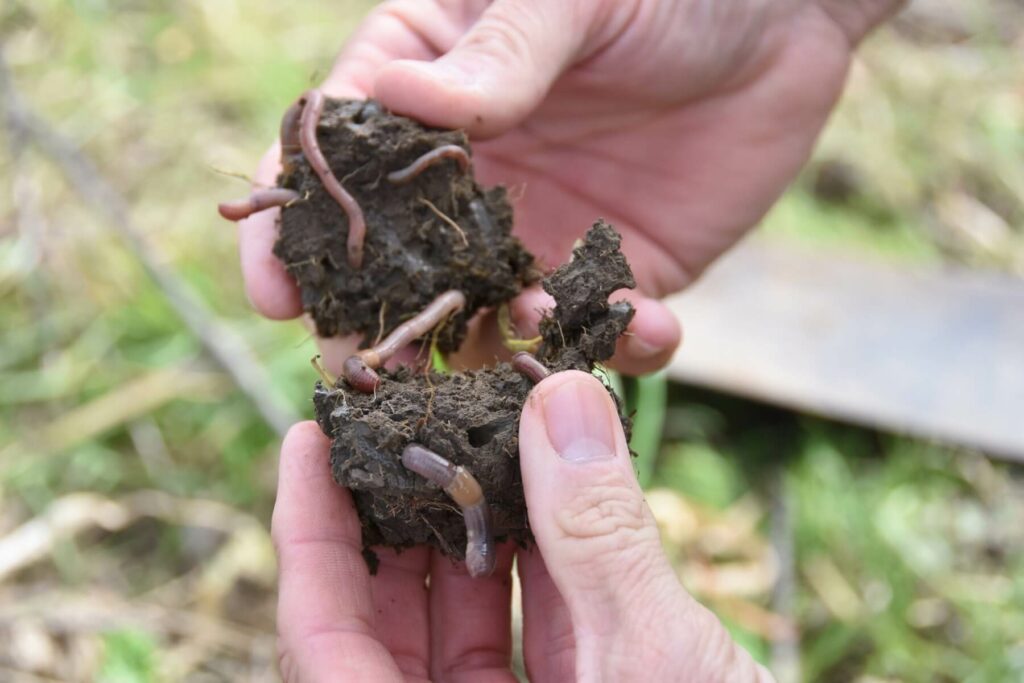 Grazing cattle in these arid areas makes a lot more sense than tillage, fallow, and grain production. By mimicking nature, Niswonger and Miller have improved their soils, their bottom lines, and their quality of life.
Grazing cattle in these arid areas makes a lot more sense than tillage, fallow, and grain production. By mimicking nature, Niswonger and Miller have improved their soils, their bottom lines, and their quality of life.
This article first appeared in the 9th Edition of Green Cover's Soil Health Resource Guide.
Also check out the 10th edition, our latest Soil Health Resource Guide, over 90 pages packed with scientific articles and fascinating stories from soil health experts, researchers, farmers, innovators, and more! All as our complimentary gift to you, a fellow soil health enthusiast!
